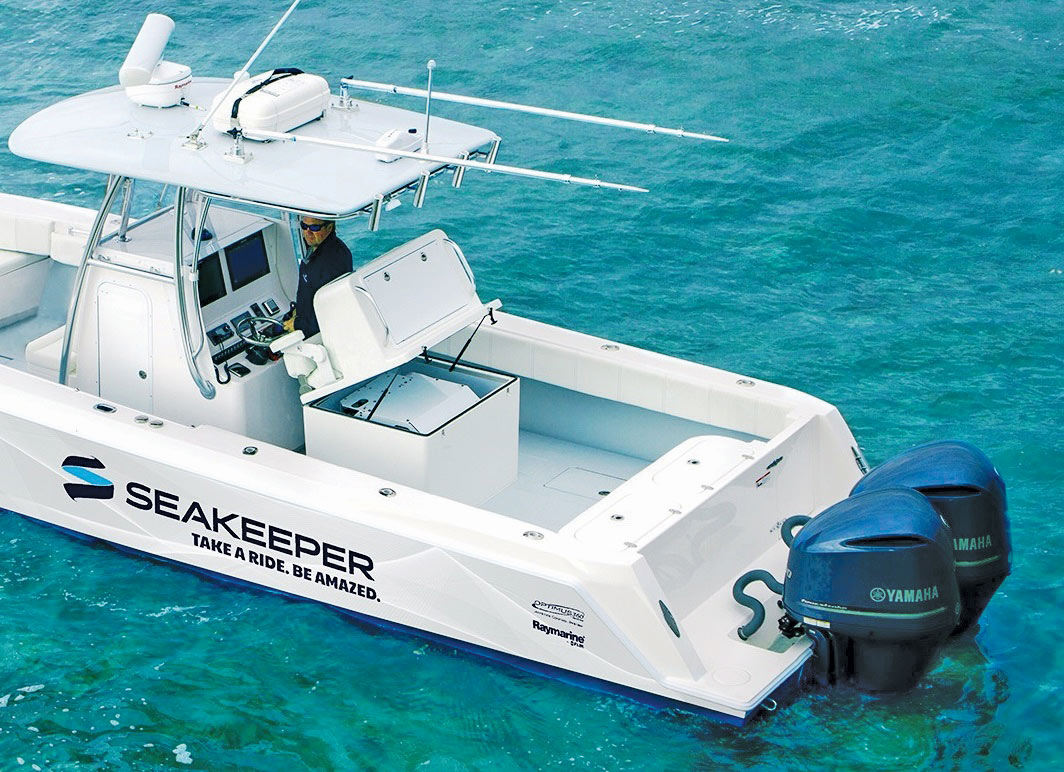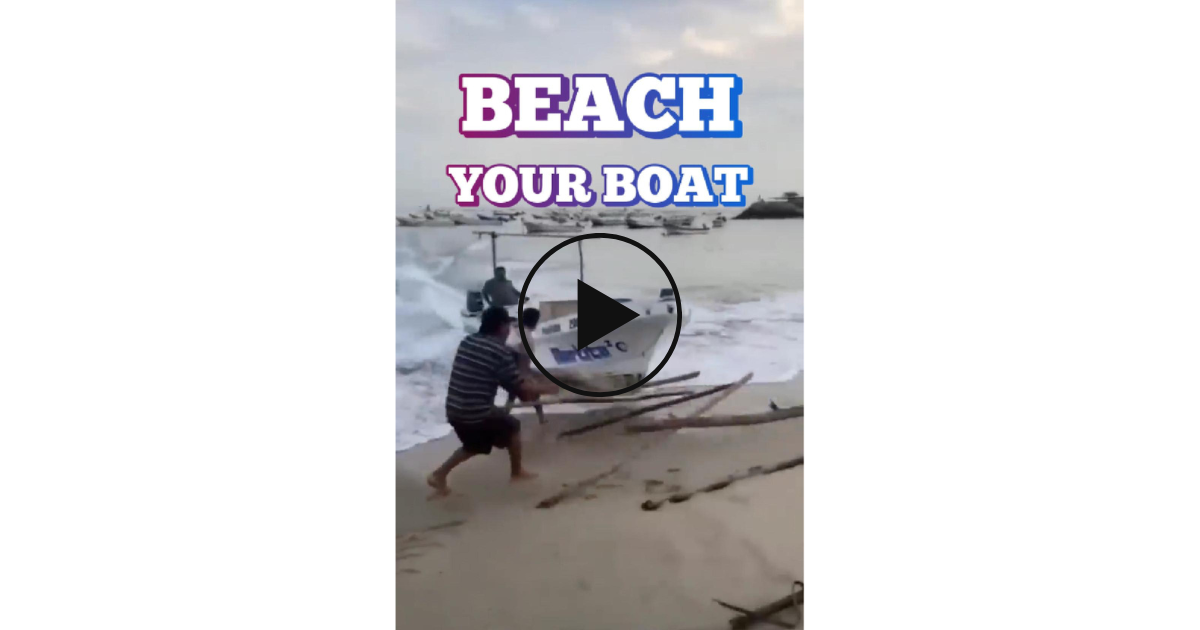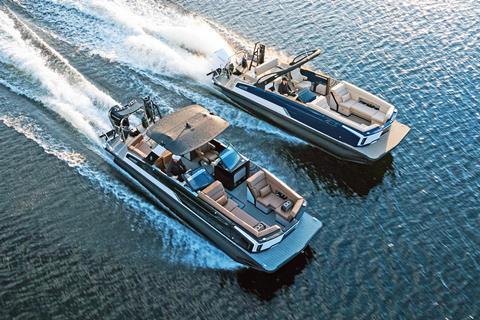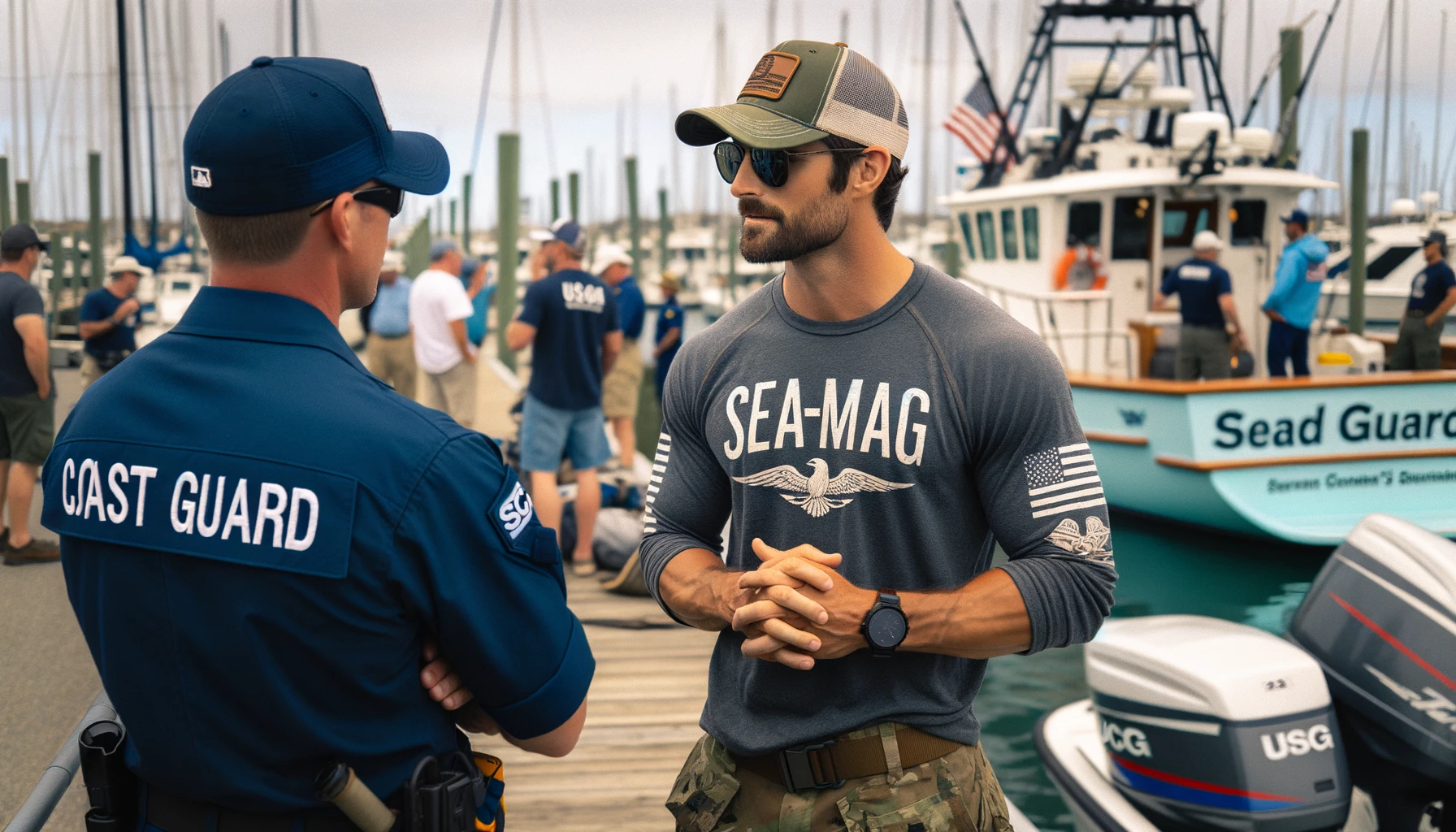What Is the Risk When a PWC Passes Too Closely Behind Another Boat? Key Safety Concerns Explained
Operating a personal watercraft (PWC) offers an exciting way to experience the water, but it's crucial to understand the risks involved.
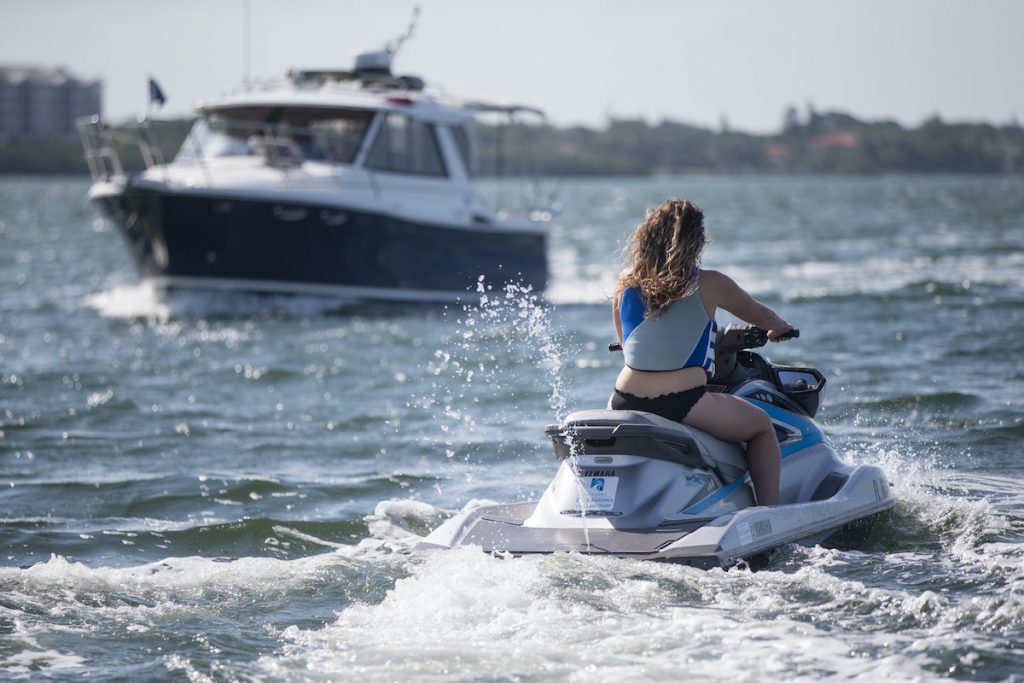
Passing too closely behind another boat on a PWC can create significant dangers. When a PWC follows too closely, it can easily collide with the boat ahead if that boat suddenly slows down, turns, or stops.
Additionally, the wake created by the boat can cause a PWC to lose control. This might lead to capsizing or even throwing the operator into the water. Such scenarios can be extremely hazardous, especially in busy waterways.

Moreover, if someone falls off the PWC, they face a risk of being struck by the propeller of the leading boat.
Understanding the Risks of Close Proximity
When a personal watercraft (PWC) passes too closely behind another boat, it can create various hazardous situations.
Key risks include increased chances of collisions, limited visibility due to blind spots, and dangers associated with wake jumping. Each of these factors seriously impacts the safety of all involved.
Collision and Accident Risks
Passing a PWC too closely behind another boat can lead to collisions and accidents. When the larger vessel in front unexpectedly slows down, turns, or stops, the PWC operator has little time to react. This sudden change can result in the PWC ramming into the larger boat, leading to severe injuries or significant damage to both vessels.
Collisions are especially dangerous because PWC operators are more exposed than those in larger, more protected boats.
Another major concern is the risk of propeller injuries. In the event of a collision, anyone thrown from the PWC could be struck by the boat's propeller, leading to serious or even life-threatening injuries. Therefore, maintaining a safe distance is crucial to avoid these potentially tragic scenarios.

Hazards of Blind Spots and Limited Visibility
Operating a PWC closely behind another boat can significantly reduce visibility due to blind spots. The larger boat ahead blocks the view of oncoming vessels, making it difficult for the PWC operator to navigate safely.
This compromised visibility increases the risk of collisions with other boats or obstacles in the water.
Additionally, the boat ahead might not be able to see the PWC. Other vessels approaching from the opposite direction are also unlikely to spot the PWC in these blind spots. This mutual invisibility poses a substantial hazard, making it essential for PWC operators to maintain a safe following distance.

The Dangers of Wake Jumping
Wake jumping is another peril when a PWC passes too closely behind another boat.
The wakes created by the leading boat can cause the PWC to become unstable. The PWC operator might lose control, leading to capsizing or being thrown off the watercraft. This loss of control can result in severe accidents and injuries.
Furthermore, jumping wakes at high speeds can damage the PWC. The hull and other structural components may not withstand the impact force, leading to costly repairs. Additionally, in rough waters, wake jumping can increase the chances of collisions with other vessels navigating the area. To prevent these dangers, PWC operators should avoid passing closely behind other boats and steer clear of their wakes.
Legal and Regulatory Considerations
Personal watercraft (PWC) operators must follow specific laws and guidelines to ensure safety on the water. Maintaining a safe distance from other boats is a critical regulation to prevent accidents and injuries.
Personal Watercraft Regulations
Personal watercraft, such as jet skis and Waverunners, fall under strict regulations to promote safe operation.
These regulations often include required safety equipment, age restrictions for operators, and specific rules for waterway use.
Many states mandate that PWC operators complete a boating safety course. Boat Ed and Kalkomey Enterprises offer these courses, focusing on recreational safety education.
The courses cover essential topics, like navigation rules and safety practices, which help operators make informed decisions on the water.

Operating A Safe Distance
Maintaining a safe distance from other boats is crucial for PWC operators.
This reduces the risk of collisions, wakes, and propeller injuries. The recommended gap varies by jurisdiction, but a good rule of thumb is to keep at least 100 feet away from other vessels.
Regulations might also restrict activities like jumping wakes and riding too closely behind other boats. According to Boat Ed, some states prohibit these actions to enhance safety. Understanding and adhering to these rules can significantly lower the risk of accidents on the water.
Preventing Accidents and Injuries
Preventing accidents and injuries on the water requires attention to several key areas. Operators must be vigilant, equipped, and considerate to ensure safety for everyone.
The Role of the Operator
The operator has a critical role in preventing accidents.
They need to stay vigilant and aware of their surroundings at all times. Avoiding distractions, such as using a phone or talking excessively, is crucial.
Operators should also maintain a safe distance from other boats to prevent collisions.
Regularly checking the boat's mirrors and blind spots helps in spotting oncoming vessels early. Understanding the PWC's handling and control is essential for making quick and safe maneuvers.
Taking a boater education course can provide valuable knowledge about these safety practices.

Essential Safety Equipment
Having the right safety equipment is vital for preventing injuries.
Life jackets should be worn by everyone on the PWC, regardless of swimming ability. These jackets should be Coast Guard-approved and appropriately sized for each individual.
A whistle or horn can be used to signal other boats in case of danger. Fire extinguishers and flares should be on board and easily accessible.
Additionally, a first aid kit can be life-saving in the event of an accident. Regular maintenance checks should be conducted to ensure all equipment is in working order.

Common Sense and Courtesy on the Water
Common sense and courtesy are equally important.
Operators should respect speed limits and no-wake zones.
It’s best to avoid areas with heavy boat traffic whenever possible. Communicating with other boaters using hand signals or pre-arranged systems can prevent misunderstandings.
Slowing down when passing other vessels or near shorelines reduces the risk of wake damage.
Operators should always yield the right of way when necessary and avoid aggressive driving.
Showing courtesy by keeping noise levels down, especially in the early morning or late evening, promotes a safer and more pleasant environment for everyone on the water.
Boat and PWC Maneuvering
Boats and personal watercraft (PWC) need careful handling to avoid accidents and ensure safety on the water. Mastering safe turns and understanding the right of way are essential for all operators.
Making Safe Turns
Making a safe turn is crucial when maneuvering a boat or PWC.
If turning too sharply, especially at high speeds, there is a risk of capsizing or losing control. For boats, wide, steady turns are recommended to maintain balance and control.
PWCs have high maneuverability, which can lead to quick, sharp turns. These turns must be made with caution to avoid collisions and to keep the rider safe.
Remember that quick turns also pose risks to other watercraft nearby, possibly catching them off guard.
Both boats and PWCs should signal turns when possible. This helps inform nearby vessels of their intentions. Consistent speed and awareness of the surroundings reduce the risk of unexpected obstacles during a turn.
Understanding the Significance of Right of Way
The right of way rules prevent collisions and help in smooth navigation. Boats have specific guidelines for who yields to whom.
For instance, a powerboat generally yields to sailing vessels because they have less maneuverability.
A PWC must be aware of its surroundings and other watercraft's intentions.
When passing another boat, maintaining safe distances and observing right of way rules are critical. If a boat or PWC plans to cross paths, the vessel on the operator's right has the right of way.
Failure to adhere to these rules can lead to dangerous encounters. Knowing when to yield keeps everyone safe and reduces the risk of accidents. Staying vigilant and respecting other watercraft ensures a safer, more enjoyable experience on the water.
Communication and Signaling on the Water
Effective communication and signaling are crucial for safety on the water. They help prevent accidents and ensure that all vessels understand each other's intentions.
Using Flags and Signals
Flags and signals play a significant role in marine communication. Different flags have specific meanings and can convey important information quickly.
Diver down flags indicate that divers are underwater and boats should stay clear.
Alpha flags signal a vessel with restricted maneuverability. Such visual signals are essential in crowded waters to avoid collisions.
Hand signals are common among personal watercraft (PWC) operators. They can signal turns, stops, and hazards.
It's important that all boaters learn these signals to ensure effective communication.
Proper use of visual signals is a basic but essential part of boating safety.
Navigational Lights and Sounds
Navigational lights are crucial in low visibility conditions like nighttime or fog.
Red and green lights on boats indicate port (left) and starboard (right) sides, helping other vessels understand the boat's direction.
White lights indicate the stern (rear) and are also used to signal anchored boats.
Sound signals are used to communicate intentions or alert other vessels.
Short blasts of the horn signal intention to pass on the right or left. Long blasts can indicate a cautionary presence around a blind turn or in foggy conditions.
Understanding these light and sound signals helps boaters navigate safely and avoid collisions, especially in congested or low-visibility situations.
Dealing with Environmental Factors
When a Personal Watercraft (PWC) passes too closely behind another boat, various environmental factors need careful consideration. These factors influence safety and navigation, making it essential for boaters to be well-prepared and vigilant.
Navigating Waves and Traffic
Waves can drastically affect a PWC's stability and control. Passing behind a larger vessel often means encountering its wake.
If the PWC hits a large wake at the wrong angle or speed, it can cause the operator to lose balance or be thrown off.
Traffic is another crucial factor. High boat traffic, particularly in busy waterways, can increase the risk of collisions.
Other vessels might not see a PWC coming from behind another boat, leading to potential accidents.
Boaters need to be aware of their surroundings and maintain a safe distance from other vessels to navigate safely.
Weather Considerations for Boaters
Weather can significantly impact boating conditions.
Strong winds can create choppy waves, making it more challenging to maintain control of a PWC. Rain or fog can reduce visibility, increasing the difficulty in spotting other boats or obstacles.
Boaters should always check the weather forecast before heading out.
Sudden weather changes can turn a safe trip into a hazardous situation.
It is also advisable to carry safety equipment such as life jackets and signaling devices to handle unexpected weather conditions effectively.
Additional Safety Considerations
Operating a Personal Watercraft (PWC) behind another boat requires careful attention to prevent accidents. These key considerations help ensure both the operator and passengers stay safe.
Proper Use of Emergency Equipment
Having emergency equipment on board is crucial.
Life jackets are non-negotiable. Each person must wear one.
A sound-producing device like a whistle or horn is essential for signaling in an emergency.
Fire extinguishers are necessary for dealing with on-board fires. They should be easily accessible and everyone should know how to use them.
Flares can be used to signal for help if stranded. Ensure they are stored in a dry, easily accessible place.
Passenger Safety and Responsibilities
Passengers must stay seated at all times or hold on to secure handholds.
In some cases, sudden maneuvers or speed changes can throw passengers off balance.
It’s essential that the operator communicates intentions clearly to avoid surprises.
Passengers also need to keep limbs inside the PWC. This minimizes the risk of injury from hitting objects or the water surface at high speed.
Educating passengers on safety practices ensures everyone on the PWC understands their role, thereby reducing the likelihood of accidents.
Importance of Lookout Practices
Maintaining a proper lookout is critical to avoid blind spots and other dangers.
It is crucial to be aware of surrounding traffic. This includes other boats, swimmers, and obstacles.
The operator should frequently scan the area to ensure a 360-degree view.
Assign a passenger to assist as an extra pair of eyes when navigating busy waters or during low visibility conditions.
Frequently Asked Questions
Personal watercraft (PWC) operators face unique risks when passing too closely behind other boats, including collision and limited visibility. Addressing common concerns about safe boating practices can help prevent accidents.
What are the consequences of shutting off the engine of a PWC while in motion?
Shutting off the engine of a PWC while in motion can cause a sudden loss of steering control. This increases the risk of collision as the operator cannot maneuver the PWC to avoid obstacles.
How can boaters stay informed about local waterway hazards?
Boaters can stay informed about local waterway hazards by regularly checking updates from local maritime authorities.
Using apps designed for boating can provide real-time information on hazards, weather changes, and other critical conditions.
What is considered the leading cause of fatal boating accidents in Florida?
The leading cause of fatal boating accidents in Florida is collisions with other vessels. Understanding navigational rules and maintaining safe distances from other boats are crucial in preventing these incidents.
What proactive measures can a boater take to prevent a collision with another vessel?
Boaters can prevent collisions by always keeping a proper lookout and adhering to safe speed limits.
Using navigational lights at night and following right-of-way rules are also critical measures to avoid accidents.
Why is understanding tidal behavior crucial when boating on coastal waters?
Understanding tidal behavior is crucial for coastal boating because tides affect water depth and currents.
Misjudging tidal changes can lead to grounding or difficulty navigating through shallow waters, which can be hazardous.
What navigational practices should boaters adopt in the vicinity of river bridges to minimize hazards?
In the vicinity of river bridges, boaters should reduce speed and stay within designated channels. They should also be aware of clearance heights and potential strong currents around bridge supports.
Charlie is Editor-in-Chief of Sea Magazine
